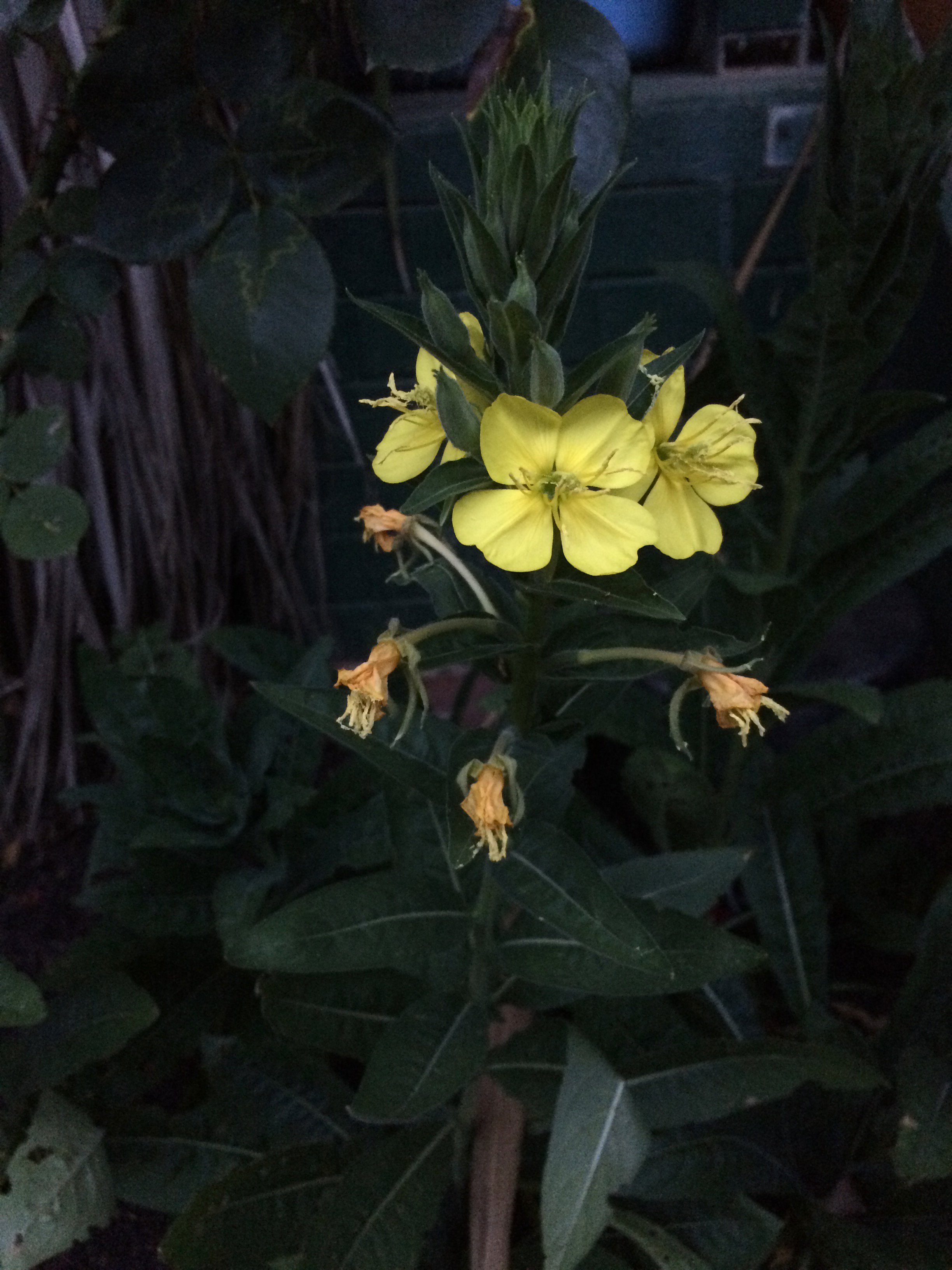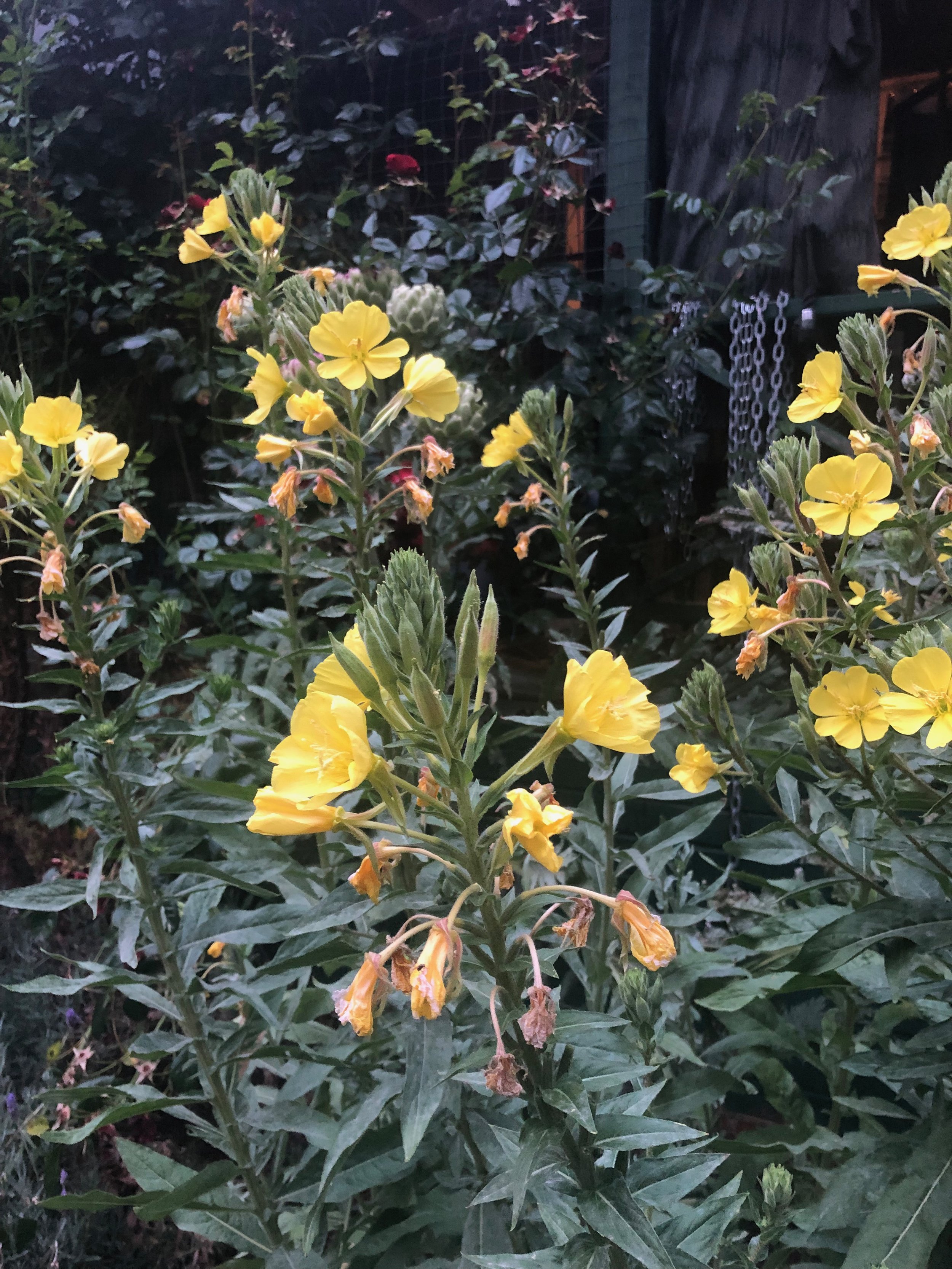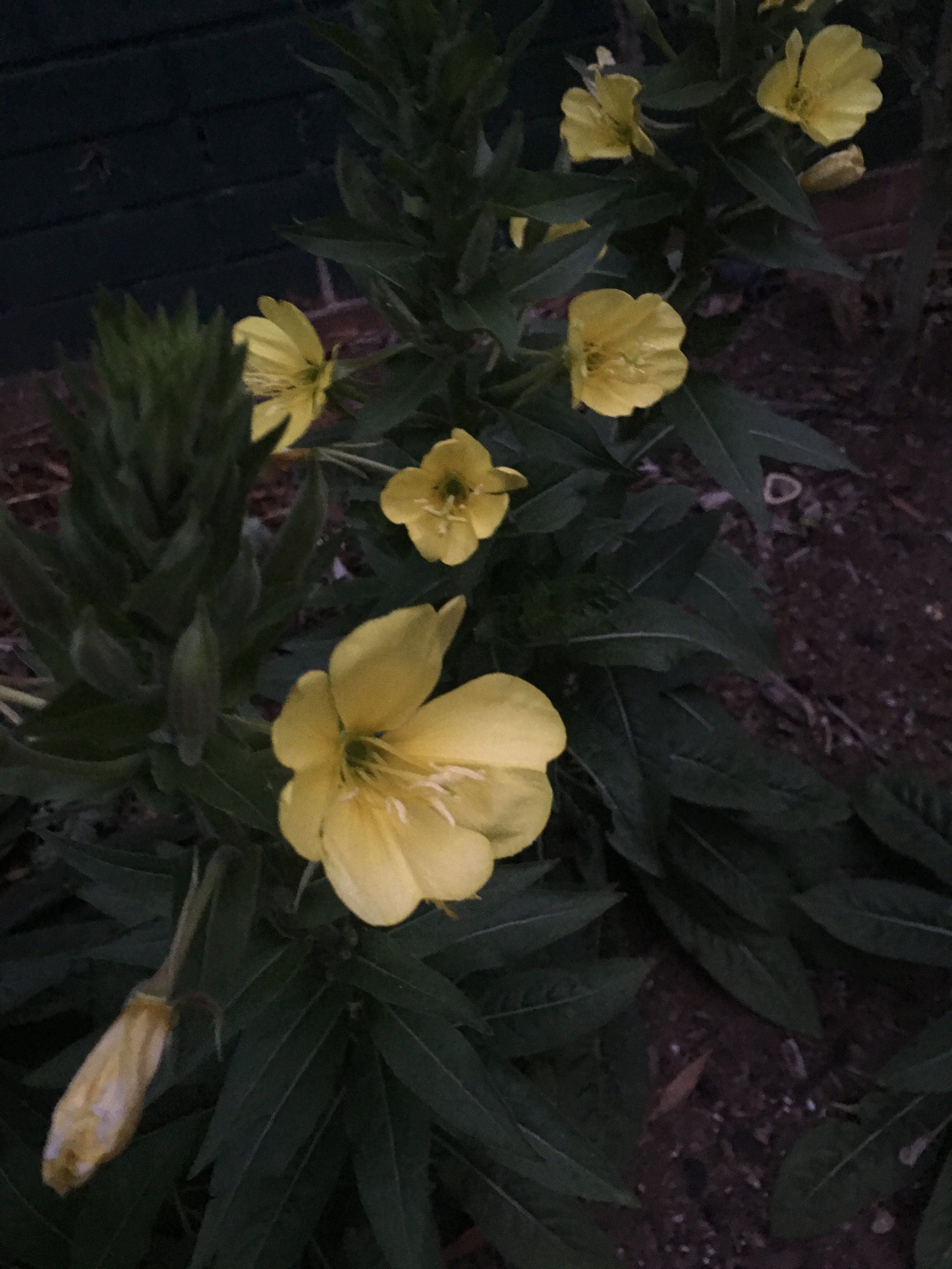 Image 1 of 4
Image 1 of 4

 Image 2 of 4
Image 2 of 4

 Image 3 of 4
Image 3 of 4

 Image 4 of 4
Image 4 of 4





Evening Primrose Seeds
Evening Primrose (Oenothera biennis)
Description:
Evening Primrose is an over-wintering, self-seeding annual or biennial flowering plant native to Europe and North America. It is recognised for its beautiful, fragrant, bioluminescent flowers that bloom in the evening, hence the name ‘evening primrose’. Evening primrose is a medium-sized plant that typically reaches heights of 3 to 5 feet (0.9 to 1.5 meters). It features a rosette of lance-shaped leaves during its first year, while the second-year growth consists of tall, branching stems with narrower leaves. The leaves are typically pale green and may have a slightly fuzzy texture. The edible flowers of evening primrose are the highlight, with large, yellow, cup-shaped blooms that open in the evening and emit a pleasant fragrance. The flowers attract pollinators like moths and butterflies.
Growing Conditions:
Climate: cool-temperate; prefers mild summers and cool winters.
Position: full sun.
Soil: well-draining, sandy or loamy soil; tolerates a range of soil types (incl. poor or rocky soil conditions) but thrives in slightly acidic to neutral pH (around 6.0 to 7.0).
Water: moderate water needs but very drought-tolerant once established.
Spacing: space the plants approximately 12 inches (30cm) apart to allow them room to spread.
Propagation: sow the seeds directly into the garden bed or seed flats/pots in late spring or early summer; tamp into the surface of disturbed soil or lightly cover the seeds (light-dependent germinator) and keep them consistently moist until germination occurs, usually within 14 to 21 days.
~100 seeds per pack
Evening Primrose (Oenothera biennis)
Description:
Evening Primrose is an over-wintering, self-seeding annual or biennial flowering plant native to Europe and North America. It is recognised for its beautiful, fragrant, bioluminescent flowers that bloom in the evening, hence the name ‘evening primrose’. Evening primrose is a medium-sized plant that typically reaches heights of 3 to 5 feet (0.9 to 1.5 meters). It features a rosette of lance-shaped leaves during its first year, while the second-year growth consists of tall, branching stems with narrower leaves. The leaves are typically pale green and may have a slightly fuzzy texture. The edible flowers of evening primrose are the highlight, with large, yellow, cup-shaped blooms that open in the evening and emit a pleasant fragrance. The flowers attract pollinators like moths and butterflies.
Growing Conditions:
Climate: cool-temperate; prefers mild summers and cool winters.
Position: full sun.
Soil: well-draining, sandy or loamy soil; tolerates a range of soil types (incl. poor or rocky soil conditions) but thrives in slightly acidic to neutral pH (around 6.0 to 7.0).
Water: moderate water needs but very drought-tolerant once established.
Spacing: space the plants approximately 12 inches (30cm) apart to allow them room to spread.
Propagation: sow the seeds directly into the garden bed or seed flats/pots in late spring or early summer; tamp into the surface of disturbed soil or lightly cover the seeds (light-dependent germinator) and keep them consistently moist until germination occurs, usually within 14 to 21 days.
~100 seeds per pack
Evening Primrose (Oenothera biennis)
Description:
Evening Primrose is an over-wintering, self-seeding annual or biennial flowering plant native to Europe and North America. It is recognised for its beautiful, fragrant, bioluminescent flowers that bloom in the evening, hence the name ‘evening primrose’. Evening primrose is a medium-sized plant that typically reaches heights of 3 to 5 feet (0.9 to 1.5 meters). It features a rosette of lance-shaped leaves during its first year, while the second-year growth consists of tall, branching stems with narrower leaves. The leaves are typically pale green and may have a slightly fuzzy texture. The edible flowers of evening primrose are the highlight, with large, yellow, cup-shaped blooms that open in the evening and emit a pleasant fragrance. The flowers attract pollinators like moths and butterflies.
Growing Conditions:
Climate: cool-temperate; prefers mild summers and cool winters.
Position: full sun.
Soil: well-draining, sandy or loamy soil; tolerates a range of soil types (incl. poor or rocky soil conditions) but thrives in slightly acidic to neutral pH (around 6.0 to 7.0).
Water: moderate water needs but very drought-tolerant once established.
Spacing: space the plants approximately 12 inches (30cm) apart to allow them room to spread.
Propagation: sow the seeds directly into the garden bed or seed flats/pots in late spring or early summer; tamp into the surface of disturbed soil or lightly cover the seeds (light-dependent germinator) and keep them consistently moist until germination occurs, usually within 14 to 21 days.
~100 seeds per pack